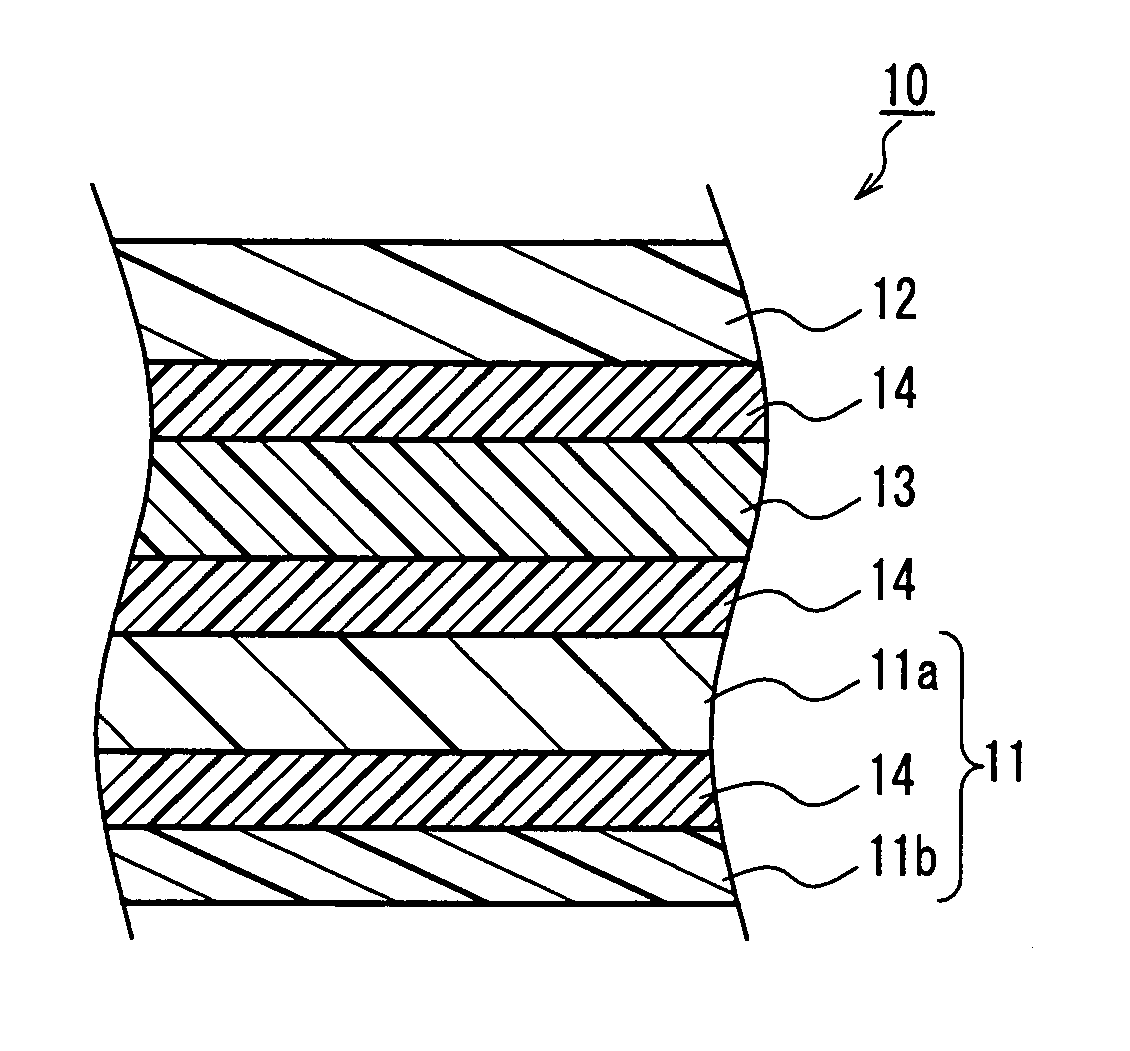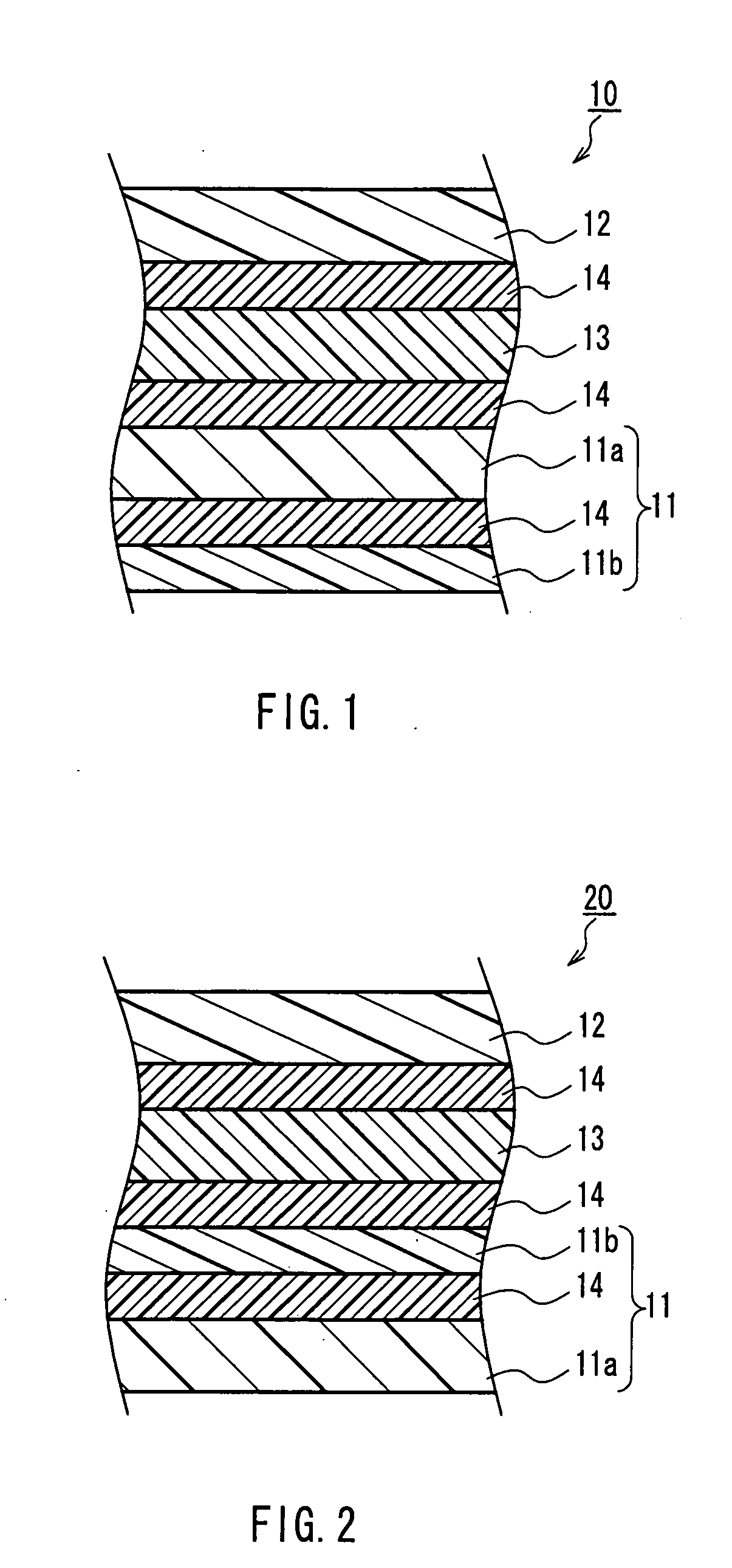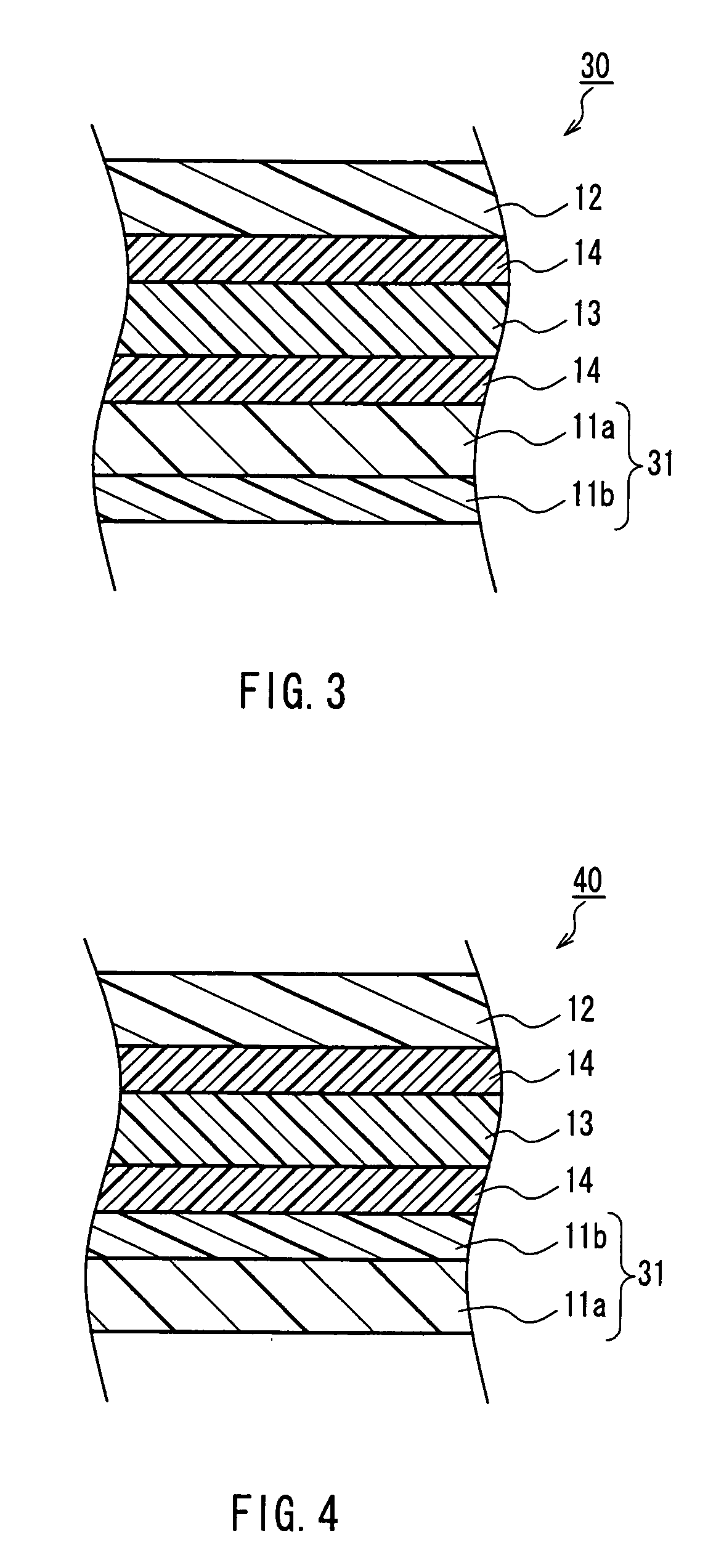Stacked phase shift sheet, stacked polarizing plate including the same and image display
a phase shift sheet and polarizing plate technology, applied in the field of laminated retardation plates, can solve the problems of reducing display quality, thick, providing a narrow retardation value range, and increasing film thickness, so as to reduce thickness, prevent coloring, and excellent optical properties
- Summary
- Abstract
- Description
- Claims
- Application Information
AI Technical Summary
Benefits of technology
Problems solved by technology
Method used
Image
Examples
examples
[0163] The following is a further description of the present invention, with reference to Examples and Comparative examples. It should be noted that the present invention is not limited to these Examples alone. The optical properties and the thickness were measured in the following manner.
(Measurement of Retardation Value)
[0164] The retardation value was measured using a retardation meter applying a parallel Nicol rotation method as a principle (manufactured by Oji Scientific Instruments, trade name: KOBRA21-ADH) (measurement wavelength: 610 nm).
(Film Thickness Measurement)
[0165] The thickness was measured with DIGITAL MICROMETER-K-351C (trade name) manufactured by Anritsu.
example a-1
[0166] A norbornene film having a thickness of 100 μm was subjected to a tenter transverse stretching at 175° C. The stretch ratio was 1.4 its pre-stretch length in the stretching direction. Thereby, an optically anisotropic layer (A) having a thickness of 69 μm, Re(A)=67 nm, and Rth(A)=136 nm, was obtained. Polyimide (weight average molecular weight: 59,000), which was synthesized from 2,2′-bis(3,4-dicarboxydiphenyl)hexafluoropropane) and 2,2′-bis(trifluromethyl)-4,4′-diamino biphenyl was dissolved in cyclohexanone, thereby a 15 wt % polyimide solution was prepared. After coating this polyimide solution on a biaxially stretched PET film, the coating film was dried (temperature: 150° C.; time: 5 minutes), thereby an optically anisotropic layer (B) having a thickness of 3 μm was formed on this stretched PET film. This optically anisotropic layer (B) had optical properties of Re(B)=3 nm, Rth(B)=110 nm, and Rth(B) / Re(B)=32.7. Then, after adhering the optically anisotropic layer (B) on ...
example a-2
[0167] A polyester film having a thickness of 70 μm was subjected to a longitudinal stretching at 160° C. The stretch ratio was 1.1 its pre-stretch length in the stretching direction. The thus obtained optically anisotropic layer (A) was 64 μm in thickness, Re(A)=65 nm, Rth(A)=70 nm, and Rth(A) / Re(A)=1.1. Next, on this optically anisotropic layer (A), a polyimide solution prepared as in Example A-1 was coated directly, and the coating film was dried (temperature: 150° C.; time: 5 minutes) so as to form an optically anisotropic layer (B) on the optically anisotropic layer (A), thereby producing a laminated retardation plate. The optically anisotropic layer (B) was 5 μm in thickness, and the optical properties were: Re(B)=5 nm, Rth(B)=180 nm, and Rth(B) / Re(B)=36.0. The optical properties of the optically anisotropic layer (B) were measured after peeling from the optically anisotropic layer (A).
PUM
 Login to View More
Login to View More Abstract
Description
Claims
Application Information
 Login to View More
Login to View More - R&D
- Intellectual Property
- Life Sciences
- Materials
- Tech Scout
- Unparalleled Data Quality
- Higher Quality Content
- 60% Fewer Hallucinations
Browse by: Latest US Patents, China's latest patents, Technical Efficacy Thesaurus, Application Domain, Technology Topic, Popular Technical Reports.
© 2025 PatSnap. All rights reserved.Legal|Privacy policy|Modern Slavery Act Transparency Statement|Sitemap|About US| Contact US: help@patsnap.com



